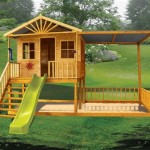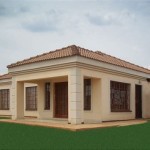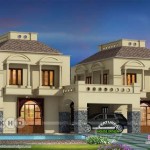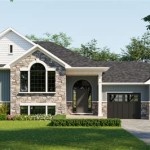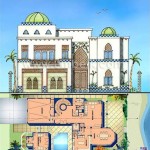Mediterranean House Plans: A Timeless Architectural Style
Mediterranean house plans evoke a sense of warmth, relaxed elegance, and connection to the outdoors, drawing inspiration from the architecture of countries bordering the Mediterranean Sea. This style, rooted in historical precedents from Spain, Italy, Greece, and North Africa, offers a blend of aesthetic appeal and practical functionality that continues to resonate with homeowners today. Understanding the defining characteristics, variations, and considerations when selecting a Mediterranean house plan is crucial for achieving a successful and harmonious design.
The enduring popularity of Mediterranean architecture stems from its ability to create spaces that are both visually stunning and comfortable to inhabit. The emphasis on natural light, ventilation, and outdoor living aligns with contemporary desires for sustainable and healthy home environments. Furthermore, the flexible nature of the style allows for adaptation to diverse climates and terrains, making it a versatile choice for various locations.
Key Characteristics of Mediterranean Architecture
Several elements consistently define Mediterranean house plans. These characteristics contribute to the recognizable aesthetic and functional advantages of the style.
Roofs and Exterior Walls: Low-pitched, often red-tiled roofs are a hallmark of Mediterranean design. These roofs provide effective insulation in warm climates and are visually appealing. Exterior walls are typically stucco, a durable and aesthetically pleasing material that can be painted in various warm colors like white, cream, or earth tones. The use of stucco contributes to the thermal mass of the building, helping to regulate interior temperatures.
Arches and Columns: Arches and columns are prominent features, adding a sense of grandeur and sophistication. Arches are commonly found in doorways, windows, and covered walkways, while columns often support porches, balconies, and loggias. These architectural elements create visual interest and provide structural support.
Windows and Doors: Large windows and doors are integral to Mediterranean design, maximizing natural light and ventilation. Windows are frequently adorned with shutters or wrought iron detailing, adding a decorative touch and providing shade. French doors are commonly used to connect interior spaces with outdoor patios and gardens, blurring the lines between indoor and outdoor living.
Courtyards and Patios: Mediterranean house plans often incorporate courtyards and patios, creating private outdoor spaces for relaxation and entertainment. These areas are typically enclosed by walls or landscaping, providing shelter from the elements and a sense of seclusion. Courtyards and patios extend the living space of the home and encourage outdoor living.
Landscaping: Landscaping plays a vital role in complementing Mediterranean architecture. Common landscaping elements include olive trees, citrus trees, lavender, and rosemary. Gravel pathways, terracotta pots, and water features further enhance the Mediterranean aesthetic. The use of drought-tolerant plants is particularly suitable for arid climates.
Variations Within Mediterranean House Plans
While sharing common characteristics, Mediterranean house plans exhibit variations based on regional influences and design preferences. Understanding these variations allows for selecting a plan that aligns with specific aesthetic and functional requirements.
Spanish Colonial: Spanish Colonial style draws inspiration from Spanish architecture, often incorporating elements like red-tiled roofs, stucco walls, and arched doorways. These homes typically feature simple, clean lines and a focus on functionality. Courtyards and patios are common, providing outdoor living spaces.
Italian Renaissance: Italian Renaissance style is characterized by symmetry, proportion, and classical details. These homes often feature grand entryways, ornate columns, and decorative moldings. Roofs are typically low-pitched and covered with terracotta tiles. The overall aesthetic is one of elegance and sophistication.
Tuscan: Tuscan style is known for its rustic charm and use of natural materials. These homes often feature stone walls, exposed wood beams, and terracotta floors. Colors tend to be warm and earthy, reflecting the natural landscape. Tuscan architecture emphasizes a connection to the land and a sense of timelessness.
Greek Revival: While technically not exclusively Mediterranean, Greek Revival shares many similarities and is often incorporated into Mediterranean-inspired designs. Key features include prominent columns, symmetrical façades, and pediments. The style emphasizes classical proportions and a sense of grandeur.
The choice between these variations depends on personal preference and the desired level of formality and ornamentation. Each style offers a unique interpretation of the Mediterranean aesthetic, allowing for customization and personalization.
Considerations When Selecting a Mediterranean House Plan
Selecting a Mediterranean house plan requires careful consideration of several factors to ensure a successful and satisfying outcome. These factors include climate, site conditions, budget, and lifestyle.
Climate Adaptability: Mediterranean architecture is traditionally well-suited for warm, dry climates. However, adaptations may be necessary for different climate conditions. In colder climates, insulation and heating systems need to be carefully considered. In humid climates, ventilation and moisture control are crucial. Selecting materials that are appropriate for the local climate is essential for durability and energy efficiency.
Site Orientation: The orientation of the house on the site significantly impacts energy efficiency and comfort. Orienting the house to maximize solar gain in winter and minimize solar heat gain in summer can reduce energy consumption. Proper landscaping can also help to shade the house and reduce cooling costs. Consideration should be given to prevailing winds and exposure to the elements.
Budgetary Constraints: Mediterranean architecture can range from simple and affordable to elaborate and expensive. The cost of materials, labor, and design services should be carefully considered when establishing a budget. Selecting less expensive materials and simplifying the design can help to reduce costs without sacrificing the overall aesthetic. Phased construction can also be a viable option for managing expenses.
Lifestyle and Functionality: The house plan should align with the homeowner's lifestyle and functional requirements. Consider the number of bedrooms and bathrooms needed, as well as the size and layout of living spaces. Evaluate the importance of outdoor living areas and how they will be used. The flow of the house should be intuitive and comfortable, reflecting the homeowner's daily routines.
Sustainability and Energy Efficiency: Incorporating sustainable design principles into a Mediterranean house plan can reduce environmental impact and lower operating costs. Using energy-efficient windows and doors, installing solar panels, and utilizing water-saving fixtures can all contribute to a more sustainable home. Selecting locally sourced materials can also reduce transportation costs and support local businesses.
Material Selection: The choice of materials significantly impacts the aesthetic appeal, durability, and maintenance requirements of a Mediterranean house. Stucco, stone, and terracotta are common choices for exterior walls and roofing. Wood, tile, and wrought iron are frequently used for interior finishes and decorative elements. Selecting high-quality materials that are appropriate for the local climate is crucial for longevity and performance.
In conclusion, Mediterranean house plans offer a timeless architectural style that balances beauty, functionality, and connection to the outdoors. Understanding the key characteristics, variations, and considerations when selecting a plan is essential for creating a home that reflects the homeowner's individual tastes and lifestyle while embodying the spirit of the Mediterranean.

Mediterranean House Plan 1 Story Floor With Pool Style Plans Homes

3800 Sq Ft Mediterranean House Floor Plan 4 Bed Bath

Mediterranean House Plan 2 Story Coastal Floor Plans Craftsman

Mediterranean Style House Plan 4 Beds 3 5 Baths 4923 Sq Ft 135 166 Houseplans Com

Mediterranean House Plans Sater Design Collection

Bellagio Mediterranean House Plans Two Story

Mediterranean Plan 3 242 Square Feet Bedrooms 5 Bathrooms 1018 00064

Mediterranean House Plan 2 Story Narrow Lot Beach Home Floor Bay Plans

3800 Sq Ft Mediterranean House Floor Plan 4 Bed Bath

16 Single Story Mediterranean Style House Plans


